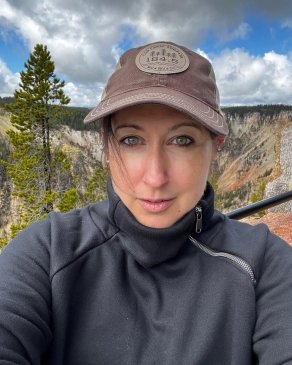A guide to optimizing your YouTube channel and uploading content with SEO best practices in mind
This is a continuation of "YouTube SEO & Channel Optimization Best Practices - Optimizing Your Channel (Part 1)."
Uploading Content to YouTube
After uploading your video, you’ll want to take some time to optimize your content.
Do your keyword research. Afterall, YouTube is a form of search engine so ensuring that you have applied search terms that are applicable to your content and maybe even trending will be paramount to the success of your content. Tools like SEMrush or Google Keyword Planner are great options for research. Aim for search terms that appear in at least 300 searches per month or more, and make sure it’s relevant to your content. After your keywords are established, practicing good YouTube SEO across the other entry fields will be easier to manage.
Pro Tip #1: Check out your competitor’s videos and steal their keywords or, even better, add your competitor’s channel name as a keyword.
Pro Tip #2: Include your relevant keyword(s) in the video file name. Make sure your target keyword is at the start of the file name and avoid trying to cram too many in.
The title of your video should include at least one target keyword, be relevant to the video and entice the viewer to watch. While clickbait-y titles do get views, they ultimately end up performing poorly because of early abandonment by viewers resulting in poor watch time... avoid! YouTube favors videos with good audience retention; the longer a viewer watches your videos, the more favorable your video content will be ranked in search results.
Along those same lines, your thumbnail is a visual cue to the viewer of what your video might contain. If you qualify to upload custom thumbnails by having a verified account, it’s highly encouraged that you spend the time to select or create a thumbnail that does your video justice.
- Who’s in the video? If there’s a featured host or speaker, include their face in the thumbnail. Or, include someone engaged/emoting positively.
- Is this video part of a series? Use a consistent style across all of the videos within the series.
Practice good design composition and don’t be afraid to include text. However, make sure your thumbnail looks good at different sizes since it will be viewable across desktop and mobile. As with titles, avoid anything potentially clickbait-y. Clickbait-y thumbnails do get views, but they ultimately perform poorly because you’ve tricked your viewer into watching content that doesn’t match the thumbnail resulting in poor watch time. Eyes on that sweet search engine ranking prize! Lastly, be critical. Does this thumbnail look like it’s the “best” video for this content? By and large, viewers see the thumbnail first before they will read anything else about your video.
Aim for at least 200+ words for your description and include your target keyword(s) 3-4 times while ensuring to use natural-sounding language. Be mindful of what appears in the first 70 characters (the text above “show more”). It’s also a good idea to include:
- Links to other relevant content (especially if it’s other relevant videos or playlists on your channel)
- Links to your website or other social channels
- Include a link to subscribe to your channel
Fill out video details to help YouTube find relevant views. As of late 2021, YouTube is testing further content discovery by location. So, including relevant locations from your video, especially a major city, landmark or park, for example, will help with your video’s discoverability.
Making your videos accessible helps improve comprehension for the hearing impaired and those who don’t speak the language, which may ultimately help with video performance. This is why including subtitles and closed captions is a good idea, not only from an accessibility standpoint but also for improving search ranking. Many viewers also choose to watch videos with the sound off so having these aids available may also increase watch time. According to YouTube, videos that utilize closed captioning also consistently see increased distribution across YouTube.
Next, you’ll want to consider how to organize your content so that viewers can easily find what they’re looking for and binge what they can’t get enough of. That’s where sections and playlists come in. Both are designed to help organize your content but have different use cases.
Sections are helpful to design the layout of your channel landing page. Sections can group content (videos or playlists) so that it makes it easier for your viewer to find content they’re interested in and navigate quickly to what they’re looking for. Sections are also relatively easy to reorganize, so if you want to temporarily group some content together (i.e., for example, to highlight videos relevant to the current season we’re in) you can group videos in sections to later remove the grouping without much hassle.
Sections do not appear in search, but playlists do, so it may be worthwhile using a playlist to group similar styles of content or a series as opposed to only using sections. Keep in mind, sections are merely a way of organizing your content. Playlists, however, can be a little more cumbersome to reorganize if you change your mind later so think about permanency when grouping videos within a playlist. Playlists are also a great way to encourage binge watching, thereby keeping viewers immersed in your content. But, make sure the number of videos you have makes sense -- have at least a handful but try to avoid a playlist that lasts for hours.
After your video has been uploaded, share it! Embed your video in blog posts or on your website, and then share through your social media channels. This can be an especially important thing when your YouTube channel is new and the algorithm is still gathering data about you and your content and establishing your ranking. The more data it can easily find, the better the chances are that your content will be well-ranked.
Pro Tip: Apart from utilizing playlists to feature your content, consider creating a curated playlist from creators you love in order to build community and gain visibility among a diverse audience.
Long-Term Advice
In order for your channel to continue to be successful, it’s important to perform ongoing channel maintenance. In addition to keeping apprised of developments within the YouTube platform itself, here are some tips on how to keep your channel fresh and relevant.
- Upload content regularly. The best way to maintain an audience is to consistently give them something to watch. Create a reasonable schedule for content creation that you can stick to and upload regularly. Understand current YouTube user behavior by reviewing recent YouTube reports and past performance to determine the best day and time to launch new videos.
- Watch your analytics. Your analytics reveal what resonates with your viewership and provide clues on why certain videos perform better or worse. It can also provide helpful feedback when you’ve made any widespread changes to your channel, the kind of content you’re producing, etc. Set initial benchmarks and revisit performance after making optimizations. Review KPIs like traffic, traffic source, subscribers, thumbnail CTR, etc. (depending on your goals!) to determine performance and continue to optimize. Along those same lines…
- When revamping a channel, start with small adjustments. Sometimes making small tweaks can increase viewership and retention dramatically. So, before reinventing the wheel, assess the situation and the individual goals for your channel and content, and consider creating a phased approach and see what happens!
- Develop videos that can run in a series. While this isn’t always possible, YouTube’s ultimate goal is keeping people on the site. Creating a series of bingeable content is an easy way to get viewers to keep watching. This not only serves the algorithm’s intent, but it will also keep viewers engaged with your content specifically.
- Consider using popular formats. Listicles, challenges and other popular YouTube formats may help increase your viewership. But use with caution as this might not be the right answer for you and your content.
- Incorporate new features and content types. When YouTube introduces new features or content types, the channel wants to maximize their visibility. As a result, users that are early adopters will see an increase in distribution for using them. One recent example in 2021 is the introduction of YouTube Shorts, short-form content served in a vertical format. Those that have taken advantage of this format have seen incredible organic growth by being featured on the homepage and across the site, regardless of channel size.
- Engage with your audience. Always respond to comments and find other ways to interact with your audience and encourage community growth. Use YouTube’s tools like polls, launch parties, live streaming, etc. where it makes sense for you and your content to encourage interaction. When uploading content to YouTube, consider selecting the “hold potentially inappropriate comments for review” option to help with moderation.






